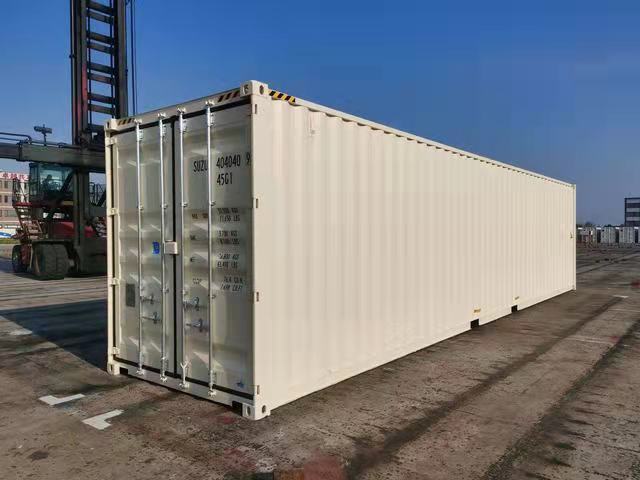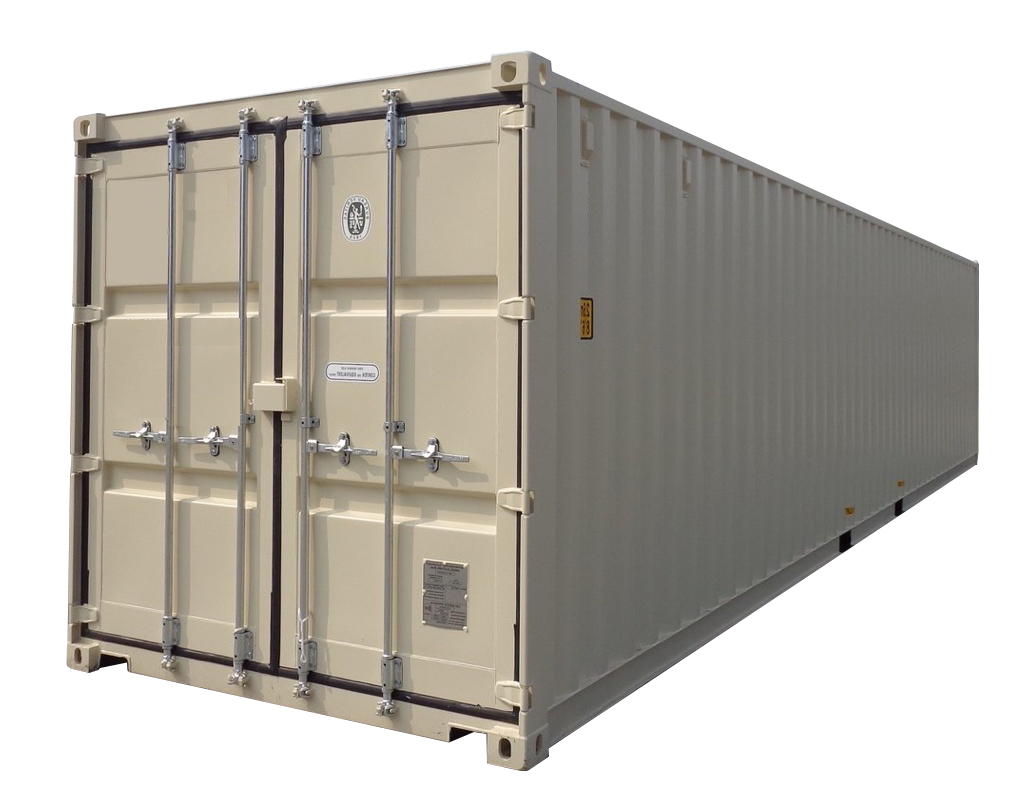What You Need to Know Before You Lease New Shipping Container 40 x 8 x 9.6 in Houston
What You Need to Know Before You Lease New Shipping Container 40 x 8 x 9.6 in Houston
Blog Article
The Ultimate Guide to Choosing the Right Shipping Container for Your Requirements
When it involves choosing the best delivery container, understanding your specific demands is essential. You'll wish to think about elements like size, type, and product to guarantee you make the very best option. From basic dimensions to specialized options, there's a great deal to discover. Plus, budgeting for both the container and any type of modifications can make a big distinction. Allow's break down the key aspects to help you find the perfect fit for your needs.
Recognizing Delivery Container Sizes
When you're choosing a delivery container, recognizing the various sizes available is vital for making the ideal decision. Delivering containers usually come in standard lengths of 20 and 40 feet, yet you'll additionally find various other measurements. Knowing the dimension you require depends on what you intend to shop or transport.If you're moving smaller sized things, a 20-foot container could be ideal, while bigger shipments frequently require a 40-foot container. The height can additionally differ; high dice containers use extra vertical room, which can be valuable for taller goods.Before choosing, gauge your freight, and consider exactly how much area you'll require for filling and dumping. Always consider possible future demands-- choosing a slightly bigger container may conserve you hassle down the line. Inevitably, selecting the right dimension will certainly improve effectiveness and ensure your items are safe throughout transportation
Sorts Of Shipping Containers Available
There are several sorts of delivery containers available, each created for details objectives and cargo needs. The conventional completely dry container is flexible, perfect for general cargo. If you're shipping subject to spoiling products, think about a refrigerated container, which maintains a controlled temperature level. For oversized items, high cube containers supply extra elevation, accommodating taller loads.If you need to transfer heavy equipment or tools, level shelf containers give a sturdy base without walls. Open-top containers allow for easy loading of high cargo, with a detachable tarpaulin covering for protection. If you're seeking flexibility, consider a retractable container that can be easily kept when not in use.Lastly, specialized containers like container containers are used for liquids, while vented containers are designed for bulk cargo that needs ventilation. Knowing your cargo type will certainly aid you select the best container to fulfill your delivery needs successfully.
Product Considerations for Durability
When picking a delivery container, the product plays an essential duty in its longevity. You'll intend to weigh the advantages of steel versus aluminum, especially relating to deterioration resistance. Understanding these elements can help you make a much more enlightened choice for your delivery needs.
Steel vs. Light weight aluminum Containers
Exactly how do you pick between steel and light weight aluminum containers for your delivery needs? Start by taking into consideration longevity. Steel containers are robust and offer outstanding strength, making them excellent for hefty lots and harsh problems. They resist damage from impacts and are often more economical, which can be a major factor for budget-conscious buyers.On the various other hand, aluminum containers are lightweight, which can save you on delivery costs. They're much easier to maneuver and are a wonderful choice if you need to deliver items often. Light weight aluminum is generally more expensive and much less robust than steel. Consider your particular needs thoroughly, including weight, cost, and the kind of freight you'll be shipping, to make the right selection for your circumstance.
Rust Resistance Aspects
Selecting the appropriate product does not simply involve weight and expense; corrosion resistance plays a substantial duty in toughness. When selecting a delivery container, consider the atmosphere it'll deal with. Steel containers, while solid, can corrosion otherwise properly treated. Try to find options with safety coverings or galvanization to boost their life expectancy. Aluminum, on the other hand, offers all-natural rust resistance, making it perfect for seaside locations or moist problems. It can be much more costly. Furthermore, analyze the container's usage-- if it'll be exposed to chemicals or severe climate, prioritize materials that can stand up to these problems. Buying a corrosion-resistant container now can save you from costly repair services or replacements down the line. Choose carefully for long-lasting benefits.
Adjustments and Customization Options
Shipping containers aren't just for transporting products; they can be transformed to meet your particular needs via different adjustments and customization alternatives. You can convert a typical container right into a relaxing workplace, a short-term retail shop, or even a personal fitness center. The opportunities are nearly endless.Think regarding including windows, insulation, or air flow to improve convenience. You might also consider electrical circuitry, plumbing, and even custom-made shelving to boost functionality. If security's an issue, strengthened locks can give tranquility of mind.For aesthetic allure, you can paint the container or include an one-of-a-kind layout to make it stick out. Do not forget floor covering options-- whether you want long lasting plywood or something more sophisticated, it can raise the space.Ultimately, tailoring your shipping container to match your demands can boost use and create an unique setting that mirrors your design.
Analyzing Your Transportation Requirements
When it concerns utilizing your modified shipping container, recognizing your transport needs is vital. Start by determining what you'll be shipping-- whether it's hefty devices, retail items, or personal items. Each kind of cargo has various needs concerning size, weight, and accessibility.Next, consider the distance and setting of transport. Are you delivering locally, country wide, or worldwide? This affects the container's design and functionality. If you're utilizing vehicles, ensure your container fits conventional measurements for simple loading and unloading.Additionally, believe concerning transit problems. Will your things need unique security from weather or temperature level variations? If so, you might need insulation or air flow functions in your container.Lastly, evaluate just how frequently you'll be carrying goods. Constant shipments may call for an extra sturdy and functional container to fulfill recurring demands. By resolving these variables, you'll be well-prepared to choose the best shipping container for your requirements.
Budgeting for Your Delivery Container
Establishing a budget plan for your shipping container is vital for guaranteeing a smooth buying procedure. Determine how much you can afford to invest. Costs can differ considerably based on dimension, problem, and this content type. New containers usually cost a lot more, but utilized ones can provide considerable savings.Next, think about any extra prices you might incur, such as transport costs, shipment charges, and modifications. If you prepare to personalize the container, consider those expenses as well. Study different suppliers to compare prices and locate the very best bargain that meets your needs.Don' t neglect to consist of any permits or laws that may put on your purchase and usage of the container. By plainly outlining your spending plan, you'll be better prepared to make enlightened decisions, ensuring you get the right container without damaging the financial institution.
Upkeep and Care for Long life
To assure your shipping container lasts for several years, routine maintenance is essential. Beginning by checking the outside for rust, damages, and damages. If you find any kind of concerns, address them instantly to avoid further degeneration. Clean the container occasionally, both throughout, to eliminate dust, particles, and wetness that can result in corrosion.Ensure the doors secure properly and lubricate the hinges to stay clear of corrosion and sticking. If you're using the container for storage, consider including ventilation to minimize humidity and mold growth. For added defense, use a rust-inhibiting paint or sealant annually.If your container's located in a harsh setting, like this contact form coastal locations, you might need to enhance upkeep frequency. Watch on the floor covering, too; any type of signs of wear ought to be repaired as soon as possible. With these basic steps, you'll prolong the life of your shipping container considerably.
Frequently Asked Questions
How Do I Find a Reputable Shipping Container Supplier?
To discover a reputable delivery container distributor, start by investigating online testimonials, requesting referrals from friends or market get in touches with, and comparing costs. Always check their credentials and guarantee they offer top quality containers that meet your requirements.

Can I Lease a Shipping Container As Opposed To Acquiring?
Yes, you can Recommended Reading definitely rent out a delivery container instead of purchasing one. Lots of suppliers use rental alternatives, which can conserve you money and give adaptability if you just need it for a brief period.
What Permits Are Needed for Container Positioning?

Are Shipping Containers Weatherproof and Appropriate for Outdoor Storage?
Yes, shipping containers are typically weatherproof, created to stand up to severe problems. Their durable building and construction maintains your products safe and secure and dry, making them ideal for exterior storage. Simply guarantee proper ventilation to avoid wetness accumulation inside.
Just how Do I Transfer a Delivery Container Once Bought?

Report this page